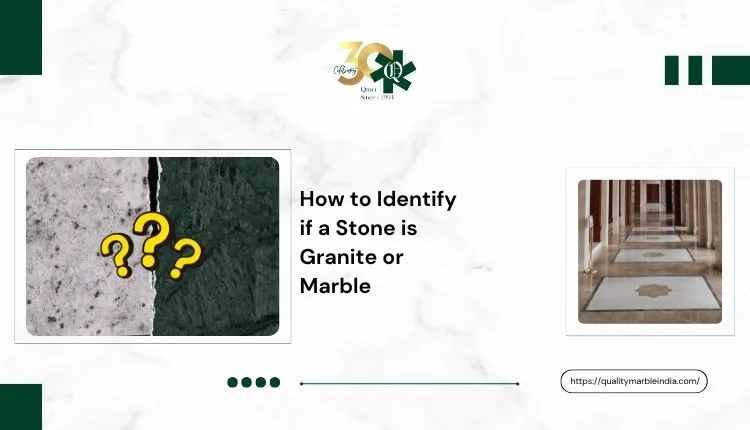Natural stone adds that special “wow” factor to any room, right? But with so many options, picking the right one can be tricky. Two top contenders most people have on their radar are marble and granite.
Now, here’s the thing: at first glance, they can look a lot alike. But once you dig a little deeper, you’ll find there’s a big difference in everything from durability to price. So today, let’s break it down and figure out how to tell these two apart—helping you make the best choice for your space!
Granite vs. Marble: Why Knowing the Difference Matters
When you’re deciding on a stone for your home, knowing the difference between granite and marble isn’t just about looks—it’s about getting the best fit for your lifestyle.
Think about it:
- Do you want something tough that can handle the hustle and bustle of a busy kitchen? Granite’s durability might win you over.
- Or, are you looking for a luxurious, classic feel in a low-traffic area? Marble can add that timeless elegance.
Getting clear on granite vs. marble will save you from surprise maintenance headaches down the road, and you’ll be confident your choice is perfect for the look you want and the way you live.
Key Differences Between Granite and Marble
So, how do you tell them apart? Here are some simple ways to spot the difference:
Appearance
Granite usually has a speckled pattern with various grains and colors, giving it a more textured, natural look. Marble, on the other hand, stands out with its smooth, flowing veins in softer, often more elegant tones.
Texture and Finish
Run your hand over each stone, and you’ll feel the difference. Granite tends to be grainy and a bit rougher, while marble has a softer, more polished feel that’s almost silky.
Color Variations
Granite offers a broad palette, from vibrant reds and blues to classic greys and blacks. Marble tends to be more limited in color, but it’s prized for its soft whites and greys, with occasional hints of green, pink, or gold.
Hardness and Durability
Granite is known for its strength, making it ideal for high-traffic spaces like kitchens and entryways. Marble, while still durable, is a bit softer and better suited for less busy spots.
Once you know these characteristics, spotting the difference between marble and granite gets easier.
Simple Tests to Identify Marble and Granite
If you’re still not sure, there are a few easy tests you can do to tell if a stone is granite or marble. These little tricks can help you identify each stone without needing to be a pro.
- The Acid Test
This one’s simple: take a tiny drop of vinegar or lemon juice and dab it on a hidden spot. If it starts fizzing or leaves a dull spot, you’re looking at marble. Granite, on the other hand, won’t react, thanks to its sturdier composition.
- Scratch Test
Take something sharp (like a coin or the edge of a key) and lightly scratch the surface. If it scratches easily, it’s likely marble. Granite’s tougher surface makes it more resistant to scratching, so it’ll likely stay smooth.
- Water Absorption Test
Put a small drop of water on the stone and see how quickly it absorbs. Marble, being more porous, soaks up water faster, which can lead to staining if it’s not sealed. Granite, however, is less absorbent, which means it’s more stain-resistant.
These quick tests make spotting the marble and granite difference straightforward, so you can feel confident in your choice.
Also there are some popular myths about granite; like it is always cool to touch. Don’t rely on such myths to differ between granite and marble. We have listed all the myths, so you know what not to do as well.
Choosing the Right Stone for Your Space
Now that you know how to tell granite from marble, it’s time to decide which one’s right for your home. Each stone has its strengths, so picking the perfect one depends on where you’ll use it and the vibe you want.
Here’s a quick guide to help:
- Go for Granite If…
- You need a durable, scratch-resistant surface for high-traffic areas like the kitchen or entryway.
- You want a wide range of colors and patterns to choose from.
- Low maintenance is a priority, and you don’t want to worry about stains as much.
- Choose Marble If…
- You’re looking to add a touch of elegance to a bathroom, fireplace surround, or a decorative space.
- You love the look of soft, natural veining and aren’t as concerned about potential scratches or stains.
- You’re prepared to give it a little extra TLC, like regular sealing to protect against moisture.
Finally…
Choosing between granite and marble is easier when you know what each has to offer, but there’s nothing like expert guidance to make the perfect choice.
If you’d like to dive deeper into the granite vs. marble debate, get advice on the best option for your space, or explore a stunning collection of both stones, reach out to Quality Marble India.
Our team can answer all your questions and help you find the ideal stone that matches your unique needs.









